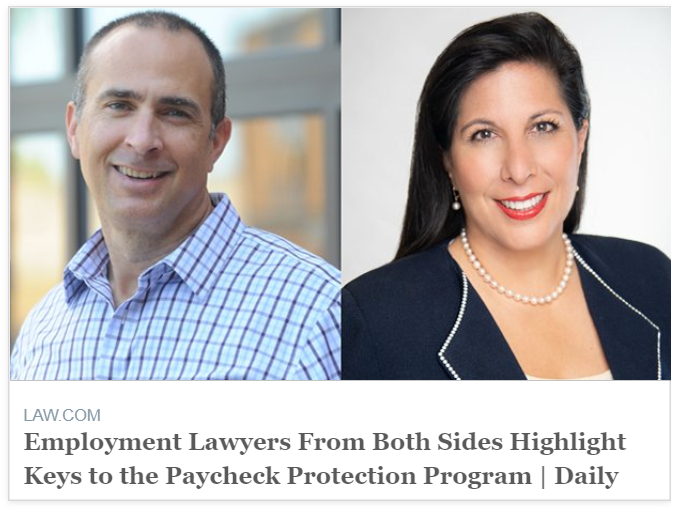
Todd Stanton co-wrote the article “Employment Lawyers from Both Sides Highlight Keys to Paycheck Protection Program” with Amanda Farahany of Barrett & Farahany for the April 16 edition of the Fulton County Daily Report.
The article focused on the employment implications, including headcount and firing, of the Paycheck Protection Program. The FCDR article also looked at ways employers can avoid litigation while adjusting to remote work, leaves of absence, and other workplace changes brought on by the coronavirus pandemic.
PPP focuses on workforce level, rather than individual employees.
“The goal of the PPP loans is to help employers maintain consistent employment levels through the crisis,” wrote the co-authors. Employers should focus on keeping the same workforce level, not the same people. Companies that have fired staff can rehire to pre-crisis levels, either with the same employees or replacement workers, and still maintain eligibility for loan forgiveness, noted Farahany and Stanton.
Fewer employment claims, yet more serious in pandemic.
While employment claims have been down during the coronavirus pandemic, the attorneys noted that they have been more serious. One such example is anticipatory termination claims, where an employee claims to be terminated so an employer can avoid Family & Medical Leave Act (FMLA) payments. In such a case, an employee who tells his employer he needs to take FMLA time to care for a sick parent is fired the next day. Don’t do this, the attorneys warned.
Retain pre-crisis Reduction in Force criteria.
The co-authors recognized that some companies cannot afford to keep all of their employees during the economic downturn brought on by the coronavirus pandemic, or may not have enough work for everyone. Employers may need to reduce their workforce. In these cases, they wrote, the process for RIFs should be the same as in non-pandemic times. “Set the workforce reduction criteria first, rather than trying to retrofit the criteria to meet the necessary reduction,” noted Stanton and Farahany in the FCDR article. “Performance, seniority, pay level, and attendance can be defensible criteria. Allow adequate time for human resources and legal departments to set the RIF criteria and plan. This will help alleviate future claims.”
While the RIF criteria should remain the same, procedures may need to be altered with many employees working from home. Stanton gave the example of a client that communicated a multi-location RIF via Zoom video conference. Some employees missed the call and others attended who were not impacted by the RIF. While Zoom was better than phone or email, it wasn’t perfect. RIF guidelines need to be locked down and explained in detail, Stanton noted. Any hint of discrimination in this type of situation could lead to disparate treatment claims.
Enraged employees are more likely to sue.
In this pandemic time, advanced planning and open communication are key in minimizing employee dissension and possible employment claims. It is even more important now for employers to clearly articulate the reasons for terminations or RIFs to employees. “Don’t play games, like shifting 1099 contractors to employees so you can qualify for a larger PPP loan,” Farahany and Stanton pointed out.
Undoubtedly, employers will face lawsuits. And law firms, like their clients, are dealing with fundamental employment challenges. “While you’re scrambling to retain clients and staff, take the time to make the right staffing decision, so when this over, it’s really over,” the attorneys wrote.
You can read the entire article on the Fulton County Daily Report web site (subscription required).